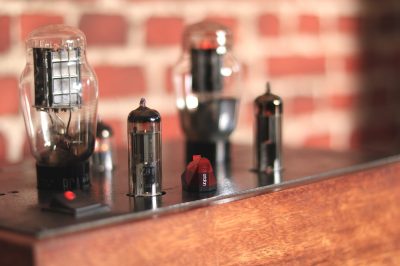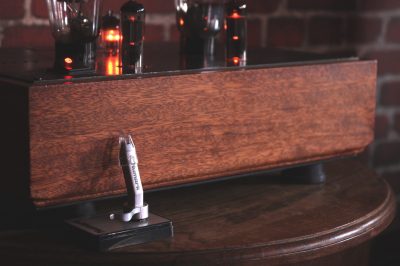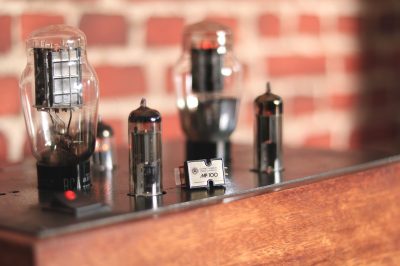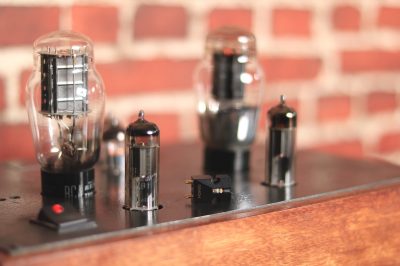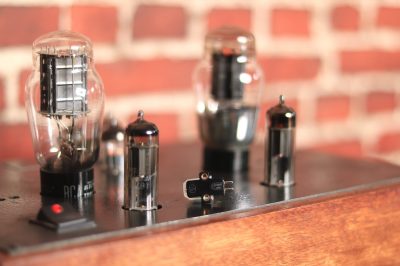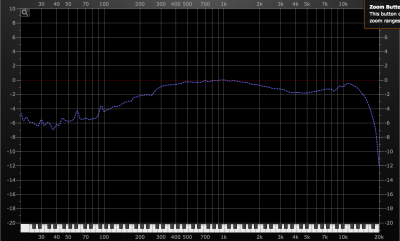The Ultimate Phono Cartridge Comparison Tool
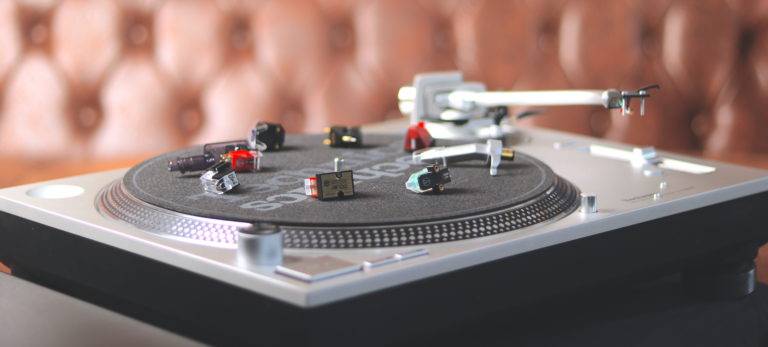
Welcome to Hi-Fi made easy - and fun!
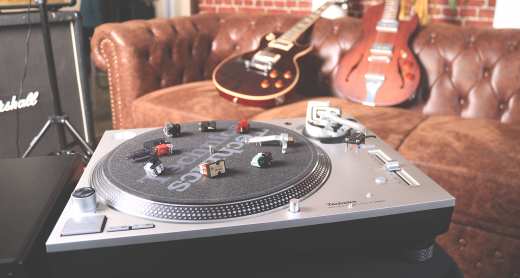
If you have ever been on a frantic search for the perfect turntable cartridge to match your Hi-Fi system, and found yourself lost in endless phono cartridges reviews and technical specifications sheets, well, we have been down the same frustrating path. But here is the great news: we created an easy and fun solution: Phono Cartridge Comparison Tool
With our interactive Tonepedia player not only can you listen to top quality audio recordings of 8 of the best phono cartridges under $500 available on the market, but you are able to directly compare them against each other – on up to 8 of the greatest tracks that made the history of music across different genres.
All you need to do is plug your headphones in, play around with different turntable cartridges, and let your ears tell the rest.
Let's start with phono cartridge comparison!
Compare all 8 phono cartridges to find “the one” or use the menu below to see our team’s best of selection.
Or click here to learn more about cartridges, our project and what made us “go for it”.
Ready? Here's your phono cartridge player:
Select the cartridge you want to listen to on the mid section of the player
(On mobile swipe L/R to switch between sections)
Select a music genre on the right section of the player
Using the bottom drop menu select your preferred track
Switch between cartridges in real time to compare their sound.
Best Buy: Ortofon 2M Red
Ortofon 2M Red
Weight: 7.2 g
Channel separation: 15db (15khz)
Stylus Shape: elliptical diamond tip; stylus tip radius – r/R 8/18 µm
Output Voltage: 5.5 mV (1000 Hz, 5cm/sec.)
Price: ca. 90$
(Check latest price here)
The Ortofon 2M Red scored as the perfect fit between quality and value among our selection – still faring just below 100$ this reliable turntable cartridge offers a few nifty features for its users, such as the environmental friendly, resonance free Holopex body, the improved engine and output level, and a tipped elliptical diamond stylus.
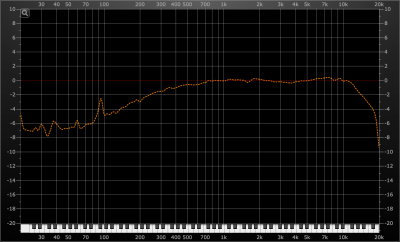
Overall the Ortofon 2m Red delivers a pleasant, warm overall sound, with noteworthy linearity in the middle frequencies response, together with a practical, widely compatible design and an affordable price.
Most DJ and user friendly: Numark CC1
Numark CC1
Weight: 18.0g
Channel separation: 28dB
Stylus Shape: Fine circular diamond tip
Output Voltage: 4.0 mV (1kHz, 5cm/sec.)
Price: ca. 55$
(Check latest price here)
While Numark CC1 may not score as the best sounding phono cartridge in our selection, there are still quite a few good things to be said about it, which might make it the best pick for both DJs and more pragmatic users. Its super easy handling means this turntable cartridge can be installed within seconds, on the go, without fear of anything going wrong.
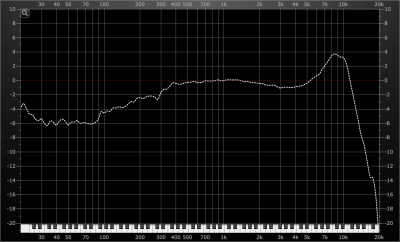
On top, the CC1 will deliver extremely high output levels for all the lovers of loudness out there, and its sturdy design will keep it lying in the groove like a tank. When pairing this with its really low price, this turntable cartridge should be a no-brainer for those wanting to spin a few records at parties or just entering the vinyl world and wanting a reliable, easy, and fun phono cartridge to start with.
Top Sounding Phono Cartridges
Nagaoka MP-100
Weight: 6.5g
Channel separation: 22dB (1 kHz)
Stylus Shape: Conical diamond; .0006 inch radius
Output Voltage: 5.5 mV (1000 Hz, 5cm/sec.)
Price: ca. 185$
(Check latest price here)
Denon DL-103
Weight: 8.5g
Channel separation: 25 dB min. (1 kHz)
Stylus Shape: 0.2 mm square solid diamond
Output Voltage: 0.25 mV (1 kHz, 50 mm/s horizontal direction)
Price: ca. 400$
(Check latest price here)
Both phono cartridges fare extremely well on channel separation, delivering an incredibly solid stereo image paired with an excellent frequency response. We loved the openness of the high frequencies on the MP-100, while also falling for the bass precision on the DL-103R, the bright feeling of the first and the magical mid-range of the second. On our side, we are ruling a tie on this one – but you should definitely pick your overall favourite phono cartridge in our player!
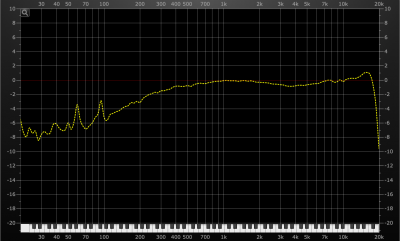
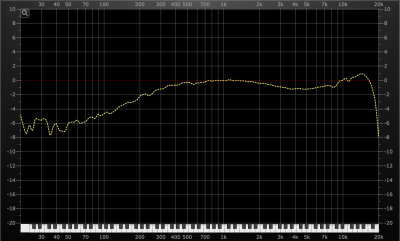
Best Phono Cartridges on Budget
Audio Technica AT-VM95E
Weight: 6.1g
Channel separation: 20dB (1 kHz)
Stylus Shape: elliptical diamond tip; 0.3 x 0.7 mm
Output Voltage: 4.0 mV (1 kHz, 5 cm/sec.)
Price: ca. 50$
(Check latest price here)
With Audio-Technica AT-VM95E you get a solid entry-level phono cartridge and, if a little time is spent on calibration, a still pretty good sounding one. Interesting features include the threaded inserts in the cartridge body for a fairly easy mount, the durable low-resonance polymer housing, and compatibility with any AT-VMN95 stylus replacement.
The Tonepedia phono cartridge comparison project
Why did you guys even do this?
That is a fair question. One does not usually wake up in the morning and decide to devise the perfect tool to compare turntable cartridges, yet they are such a fundamental brick in building the perfect Hi-Fi sound system for your home.
And that was exactly the problem until now: nobody had yet done anything like this – a free, fully interactive, Hi-Fi, fully calibrated, real-time way of listening to different phono cartridges, that would allow users to choose the one whose sound they like the most. You might wonder how we got there.
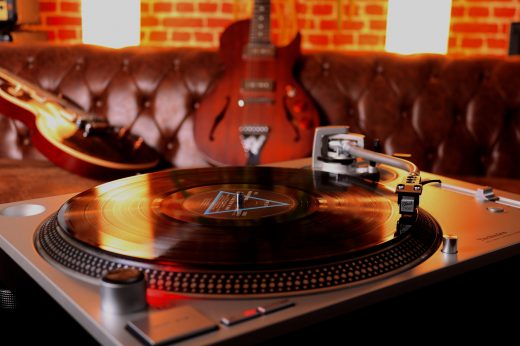
Things might get a little techy from here on, so let’s dive in.
Even though the Tonepedia audio team is known for building great comparison tools for all sorts of audio gear, this particular project posed its own challenges.
Phono cartridges are complex audio devices, that represent the delicate beating heart of your Hi-Fi system setup chain. So how did we make sure we could make an unbiased test, which meant we would compare the sound of the cartridge and the sound of the cartridge alone?
Any system needs to be optimised in order to give great – and consistently comparable – results. That’s why on top of our ears we used analysers, high-end test vinyls and various other calibration tools and got down to the task. Our calibration steps included setting the optimal tonearm height (Vertical Track Angle and Stylus Rake Angle) and counterweight (Vertical Tracking Force), as well as fine-tuning the cartridge position (Overhang, Tracking Error, Azimuth), and Antiskating.
All our cartridges were mounted and played back on the Technics SL1200MK7 turntable, the newest model out of the Technics SL-1200 family, which has now been for several decades one of the most sold and famous turntables series in the world. Its perfect synthesis of top level quality and sturdy build makes this turntable equally popular with DJs and Hi-Fi enthusiasts.
While SPL has not been in the Hi-Fi market for a long time, it has earned an excellent reputation in this area within a very short time. The SPL Phonos preamp is at mastering gear level in terms of quality, and its cartridge section offers excellent and versatile possibilities to calibrate different turntable cartridge types.
Again, we decided to go with an industry standard on the recording side. The UAD Apollo X6 has top AD converters, and one of the best signal to noise ratios on the market. All turnatable cartridges were recorded at the highest quality, as a 96kHz 32-bit floating-point stereo signal.
When making our musical tracks selection, our first priority was to keep our project as relatable, easy, and accessible as possible. For this reason we decided to go with some of the most famous and easily available records out there – a choice that also ensured we could easily replace any of the vinyls with copies from the same pressing, if they underwent the slightest wear, and keep the consistency and comparability of our recordings. At the same time, each of the musical tracks is representative of one or more sound characteristics where turntable cartridges make the difference (see below).
Why should I care about turntable
cartridges when building my system?
Every magical audio experience in the world consists of the refined dance happening in the translation from a physical medium to electric signal, and then to physical medium again. Think about yourself (physical medium) singing into a microphone connected with a cable (electric signal) to a speaker that lets you hear the sound again (physical medium). When it comes to this translation, the specific design of a phono cartridge is the most important element that stands between you and the musical information pressed onto your favourite record: lose part of the information at this stage, and you will never be able to get it back.
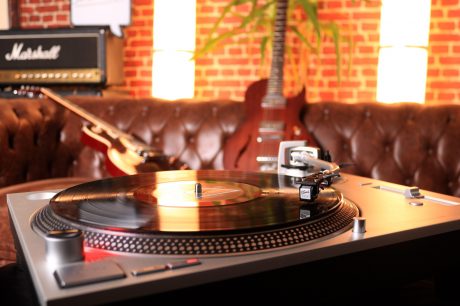
Ok, but how do cartridges actually work?
Well, in very simple terms every cartridge functions on the same principle: a record is made of concentric grooves, and each cartridge has a stylus following the horizontal and vertical modulation of said grooves. The micromovements of the stylus are used to induce variations in the field of a built-in magnetic component, and, thanks to Faraday’s Law, to convert such variations into a small electrical current by use of a coil. How effective this translation happens to be, is what depends on the specific design of each cartridge.
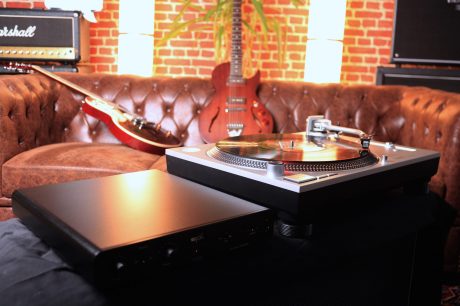
So what makes cartridges different from one another?
A detailed answer to this question would take days to read, and that’s without taking into account the hot debates and opposing opinions animating audiophile discussions. Nevertheless, here are 4 commonly found tech specs that we think you should definitely look out for when choosing a cartridge.
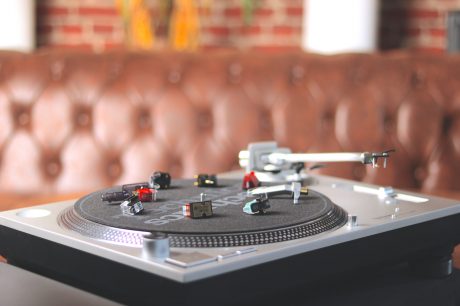
Turntable cartridges today are mainly designed with one of two generator types, moving magnet (MM) or moving coil (MC). In MM cartridges, the most common design, the magnet is mounted on the stylus, and the coils are fixed onto the cantilever. This design determines a higher weight for the stylus (the moving part), but thanks to bigger coils also generates a higher output (mV). MC cartridges have a MM reversed design: in this case very small coils are mounted on the moving stylus, and the magnetic component is fixed, resulting in lower stylus weight but also a much lower output (μV). This last aspect is responsible for MC phono cartridges requiring an additional, specific amplifier stage compared to MM cartridges, as well as for MC cartridges being more susceptible to noise and hum. On the other hand, the significantly lower weight of their moving section allows for a broader frequency response and faster transient response, meaning a more detailed overall reproduction in general and an increased sensitivity for low level signals in particular, which a heavier MM design might miss.
Size and tip shape have an important role in affecting the sound of a phono cartridge. As a general rule, the smaller the area of contact between stylus and record is, the more accurately a stylus can track the modulations in the groove and correctly reproduce the audio information, especially in regards to high frequencies. The two most common stylus shapes are spherical (also called conical) and elliptical, with elliptical generally faring better than spherical, given roughly equal size. The elliptical shape has also been further refined and evolved into new, more efficient designs, such as line contact, shibata, and micro line.
Although these are in reality two distinct technical characteristics, channel separation and channel balance both greatly influence the stereo image of phono cartridges. The first of the two is used to indicate how well a transducer can deliver the audio signal independently on each channel, based on the information contained in the groove. That means, how much of the left hand signal information would you be able to hear on the right channel? This value is expressed in dB on tech sheets, and the higher the value the better is the channel separation.
On the other hand, channel balance indicates how consistently the transducer can reproduce the output on the two channels. An ideal cartridge would have a difference of 0 dB when measuring the respective outputs of the left and right channels, therefore the smaller the dB value found on a tech sheet, the better the channel balance.
Compliance in a phono cartridge can be described as the overall “springiness” of the cartridge itself. This is dependent on different elements of the design, and is the value used in order to match the most appropriate cartridges to the most appropriate tonearms. The higher the compliance, the lower should be the weight of the tonearm (low mass tonearms) and vice versa, in order to avoid unwanted resonances created by a wrong interaction between the two.
Also called tracking ability, it describes how well a stylus can follow the modulated groove on a record without sliding or losing contact. It is measured as the maximum amplitude a stylus can track without distorting the signal, and is often expressed in micrometers (μm). Trackability depends on more than one cartridge characteristic, such as the stylus shape, the correct alignment of the cartridge, as well as the compatibility with a turntable arm.
What should I look for when listening to different phono cartridges?
At this point, you probably know how the design and build of a cartridge can significantly change what you hear when playing your favourite record. To make it all more practical, here are a few things to look out for, and where to listen to them in our player:
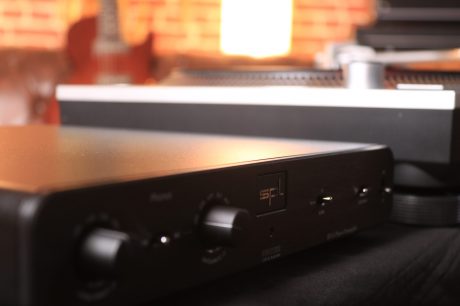
Technical specs such as good channel separation and channel balance make a dramatic difference in the reproduction of a recording’s stereo image on your playback system. To try this out, listen for example to the live orchestra recording of the Hans Zimmer record. Pay attention to the position of different instruments, as well as to the sense of depth in the sound, and notice how this changes when switching between different cartridges. Other good reference sounds are Herbie Hancock’s dramatically panned instruments (channel separation) and Dr Dre’s very central high hat sound (channel balance): is the sound well centred in the middle or does it come a bit from one of the sides?
The specific shape and size of a stylus will go a long way into determining how clearly you can hear that crispiness in high frequencies that makes a record breath.
Unsurprisingly, the best tracks where to compare phono cartridge clarity in the high frequencies, are those in the jazz section. Listen carefully for the “S” sounds in Nora’s voice, and how clearly or how distortedly they are reproduced, as well as the transients of cymbals in the Herbie Hancock track.
Good compliance and trackability are fair indicators when it comes to gauge how a turntable cartridge will perform on the low end. The better amplitude and transients can be reproduced, the more bass information you will get – although on this subject it often really comes down to taste.
With its limited dynamic and loud mastering, the Daft Punk track might be the best place to check how different phono cartridges behave on the low end, also in terms of distortion. And to get a good idea of how punchy that bass can get, you might want to listen to the Dr Dre track.
A good gauge of how much sound amplitude a cartridge will deliver before starting to distort the sound can be found under the “trackability” spec.
To check for the different turntable cartridges performance in this respect, take a listen to a busy rock track such as Nirvana or Pink Floyd on our player. Focus on the crash cymbals sounds, where any distortion will be easier to detect. In alternative, the loud left trumpet on Herbie Hancock’s track can also be a good indicator.
Unfortunately, there is no quick indicator for this one, and the best you can do is to use your own ears. But one of the best ways to evaluate a cartridge is to observe how it behaves on very dynamic recordings – that is, those that have the greatest volume range either over time or between different instruments.
On our player, pick the Herbie Hancock’s record or Hans Zimmer orchestral recording, and get a feeling of how different cartridges react to the different instruments’ loudness in the first, or to the slow build up in level in the second. How much detail of each can you hear? Are ghost notes clearly reproduced or lost “behind” louder sounds?

